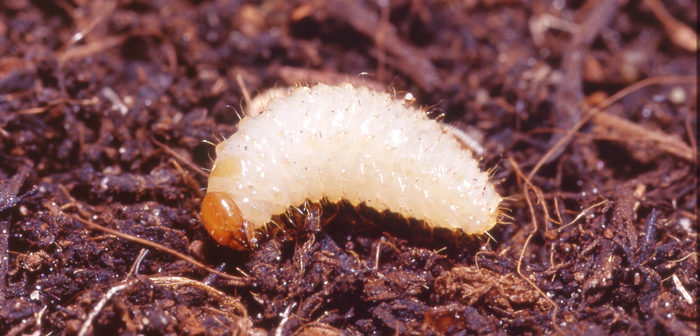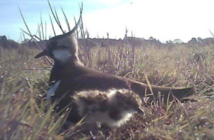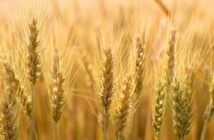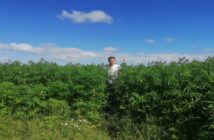New experimental work has confirmed that Nemasys L (Steinernema kraussei) provides better control of black vine weevil at a range of temperatures compared with other species of nematodes used to control this pest. Nemasys L is manufactured in the innovative, state of the art production facility at Littlehampton, which prides itself as being one of the best in terms of quality.
Rob Storer of BASF explains that the trials on black vine weevil compared Nemasys L with a number of other parasitic nematode products. “We initiated this work originally to prove once and for all that Nemasys L works just as well at warmer temperatures as at lower ones. The temperature data for this trial ranged from a high of 40°C down to below minus 5°C. Nematodes were applied at 25,000 per plant, and Met 52 OD at 0.05 ml/plant on the 31st August 2017. The untreated suffered nearly 6 vine weevils per plant; Nemasys L reduced this to less than 1 per plant, which was the best treatment in the trial. Met52 resulted in 5.2 weevils per plant, Nemtrident H 5 per plant, Nema-top 4.2, Larvanem 4.1 per plant.” Nemasys L really outshone the other treatments. We were surprised at the results for the competitors, none of which performed as we expected. This could possibly be down to formulation as the BASF product is well known to be of particularly high quality.
“Nemasys L (Steinermema kraussei) is nematode that controls the immature stages of the black vine weevil in strawberries and other crops under a wide range of temperatures. Nemasys L is effective at all times and across a soil temperature range of 5 ºC to 30ºC, when the larvae are active and feeding,” says Rob.
Black vine weevil (Otiorhynchus sulcatus) is a devastating pest of many plants, particularly soft fruits, glasshouse ornamentals and nursery stock. It feeds on over 140 different plant species. In strawberries alone they are thought to be responsible for losses of over £10 million each year. The adult feeds on the foliage producing characteristic notches, which is a problem in nursery stock such as Azaleas, Camellias, Fuschsias and Rhododendrons where cosmetic damage can make plants unmarketable. “Larvae in the soil or growing medium feed on roots, leading to wilting or even death of the plant. When applied as a drench or through irrigation systems, Nemasys L controls the damaging larvae rapidly and safely.”
“This assured activity across a wide temperature range added to its high quality formulation is what differentiates Nemasys L from other nematode products,” comments Rob.
Adult vine weevils are active from May to October. The female lays 500 eggs in the soil or compost from July to September. Eggs are 1mm across, white turning brown and are difficult to see. The larvae hatch after 2 weeks and start feeding on roots. The beneficial nematodes, usually applied from February to November, seek out the larvae and once inside release symbiotic bacteria, quickly killing the insect pest. The microscopic nematodes reproduce inside the insect and release a new generation of infective juveniles that seek further larvae, providing long lasting effects. Nemasys L persists in the soil for four weeks.
Nemasys L can be applied using standard spray applicators. Drench application is preferred, particularly where canopies are dense. New plant material coming into the nursery should always be treated as it may contain vine weevil larvae. As well as being effective at warm and low temperatures, Nemasys L has no resistance problems, no residue concerns, no re-entry interval, no requirement for protective clothing and no disposal restrictions.
Rob Storer notes that “there is increasing pressure for effective pest and disease control in specialist crops, particularly fruit crops, but there are more legislative and practical challenges for growers. We need effective alternative options in speciality crops and Nemasys L provides this. BASF are developing market-leading science in both conventional and biological approaches.”
“One that we are developing further for both conventional and organic strawberries is Nemaslug. Nemaslug is a microscopic beneficial nematode Phasmarhabditis hermaphrodita, formulated in an inert carrier for application to crops. The product is applied at 1 l/ha which delivers 50,000 nematodes per m² and so inundates the soil with over 500 million juvenile nematodes per hectare. The nematode seeks out slugs immediately after application and within three days slugs will have stopped feeding. Unlike some controls, Nemaslug continues to work well during wet weather – exactly what is needed. Its effects will last for 6 weeks, a lot longer than other treatments, and a second application can follow if slug pressure is high.” says Aneeta Gupta who specialises in biologicals for BASF.
“Nemaslug provides an alternative to metaldehyde and ferric phosphate that has no water issues, has no pest resistance problems, no requirement for protective clothing and no disposal restrictions. The quality of biological products is particularly important in this sector. In independent research, Nemasys L was compared with two well-known competitor biologicals and was found to be the most consistent, delivering significantly higher mean number of live nematodes per pack,” concludes Aneeta.




